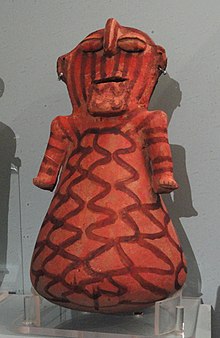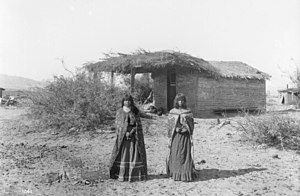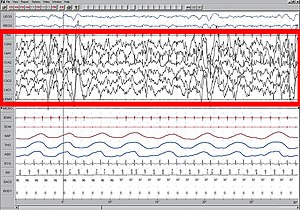Sleep-learning (also known as hypnopædia, or hypnopedia) is an attempt to convey information to a sleeping person, typically by playing a sound recording
to them while they sleep. Although often used in pop culture as a way
to introduce new information (see 'In Fiction'), sleep is considered an
important period for memory consolidation.
Although learning new information during sleep has not been considered possible, at least to the extent it is used in fiction, the term hypnopedia has also been used to refer to the technique of exposing someone to sounds or odors during sleep in attempts to boost memory for previously learned information. Hypnopedia, in this sense, is related to a technique now known as Targeted Memory Reactivation (TMR). Unlike the pop-culture idea of sleep-learning, or learning new information during sleep, TMR pairs newly acquired information with sounds that can later be played, or cued, during electroencephalography (EEG) verified sleep to strengthen memory. This type of sleep reactivation in humans has been found successful in strengthening memory in a number of different paradigms including language learning, motor-skill learning, and spatial memory. Research in TMR has shown that cueing sounds that are associated with previously learned material over a period of sleep is more beneficial to memory than a similar period of wake. Likewise, cued material is also better preserved than material that is not cued during sleep.
Although learning new information during sleep has not been considered possible, at least to the extent it is used in fiction, the term hypnopedia has also been used to refer to the technique of exposing someone to sounds or odors during sleep in attempts to boost memory for previously learned information. Hypnopedia, in this sense, is related to a technique now known as Targeted Memory Reactivation (TMR). Unlike the pop-culture idea of sleep-learning, or learning new information during sleep, TMR pairs newly acquired information with sounds that can later be played, or cued, during electroencephalography (EEG) verified sleep to strengthen memory. This type of sleep reactivation in humans has been found successful in strengthening memory in a number of different paradigms including language learning, motor-skill learning, and spatial memory. Research in TMR has shown that cueing sounds that are associated with previously learned material over a period of sleep is more beneficial to memory than a similar period of wake. Likewise, cued material is also better preserved than material that is not cued during sleep.
History
In 1927, Alois Benjamin Saliger
invented the Psycho-Phone for sleep learning, stating that "It has been
proven that natural sleep is identical with hypnotic sleep and that
during natural sleep the unconscious mind is most receptive to
suggestions."
Since the electroencephalography studies by Charles W. Simon and William H. Emmons
in 1956, learning by sleep has not been taken seriously. The
researchers concluded that learning during sleep was "impractical and
probably impossible". They reported that stimulus material presented
during sleep was not recalled later when the subject awoke unless alpha wave activity occurred at the same time the stimulus material was given.
The idea of reactivating memories in humans to improve memory
began with the finding that neurons active in the hippocampus in rodents
were found to fire together during subsequent sleep.
In 2012, research from the Weizmann Institute of Science indicated that classical conditioning
can occur during sleep by using odor recognition. "During sleep, humans
can strengthen previously acquired memories, but whether they can
acquire entirely new information remains unknown. The nonverbal nature
of the olfactory sniff response, in which pleasant odors drive stronger
sniffs and unpleasant odors drive weaker sniffs, allowed us to test
learning in humans during sleep."
In fiction
The idea of sleep-learning is found in influential science fiction and other literature. The following examples are listed chronologically by publication or original air date, when known.
- In Hugo Gernsback's 1911 story Ralph 124C 41+, one finds the Hypnobioscope, a sleep learning device.
- In Aldous Huxley's 1932 novel Brave New World, it is used for the conditioning of children into the novel's fictional future culture. In the novel, sleep-learning was discovered by accident when a Polish boy named Reuben Rabinovitch was able to recite an entire radio broadcast in English after a radio receiver was left on in his sleep. The boy was unable to comprehend what he had heard via hypnopædia, but it was soon realized that hypnopædia could be used to effectively make suggestions about morality.
- In Robert Heinlein's 1948 novel Space Cadet, the character Matt Dodson is taught to speak Venutian (the language of the planet Venus) while under drug-aided hypnosis. He surprises his Venus-born friend Oscar by spontaneously reproving him when Oscar utters a curse in Venutian. (Later in the novel Matt appears to have forgotten what he learned and relies on Oscar for translation.)
- In the BBC Radio series Journey into Space (1953–1958), during the second and third parts of the trilogy, there were said to be Martians abducting people from the Earth and conditioning them to obey instructions or to make them believe things that were not true. The inception of this conditioning involved putting the subject into a hypnotic sleep and appraising them of a certain situation; once they awoke they would believe it, regardless of the validity.
- In a 1961 episode of My Three Sons, "A Lesson In Any Language", Mike connects a phonograph to an automatic timer to play Spanish lessons while he sleeps. Steve and Bub ultimately end up sleeping in the room and are able to speak fluent Spanish the following day.
- In Anthony Burgess's 1962 novel A Clockwork Orange, it is used to reverse the effects of the Ludovico Technique, a form of classical conditioning, which was used on the main character Alex to make him incapable of violent behavior. The conditioning was a new technique which was supposed to rehabilitate violent criminals in a short period of time, but which resulted in Alex attempting to commit suicide. This reflected very badly on the government, which had sanctioned the experiment, so hypnopædia was used to undo the conditioning.
- In 1954 Günter Spang wrote a children's book called Lohengrin schwant etwas, meaning Lohengrin has a good idea, in which a bunch of schoolchildren take an easy way out of studying by learning in their sleep.
- In a 1963 episode of The Patty Duke Show, "The Conquering Hero", Cathy tries to help a failing basketball player pass a quiz. She suggests that the latest scientific method of "subconscious learning" will help. She records the lessons on a tape which plays repeatedly while he is asleep. He passes the quiz after the answers "come to him" while looking at the questions.
- In the 1965 episode of "I Spy" titled Chrysanthemum, the assigned partner of Bill Cosby and Robert Culp's characters, Maximilian de Broget claims to have learned Mandarin Chinese in his sleep.
- In the 1965 movie The Monkey's Uncle, a college student connects a phonograph to an automatic timer, which plays to sleeping students the voice of a girl reading their lessons aloud. This backfires in class, however—when asked to give an oral report, the students speak, but in the girl's voice.
- In the 1966 novel Flowers for Algernon, an intellectually disabled 37-year-old, Charlie Gordon, has an operation to increase his intelligence. Professor Nemur and Dr. Strauss then give Charlie a "teeching mashine that werks like T.V." Charlie explains to Professor Nemur that "I dint think I was goin to get smart anyway" [sic].
- The 1976 film Logan's Run contains a scene where Logan 5 (Michael York) chastises his friend Francis 7 (Richard Jordan) for his rigidly orthodox opinions, "You sound like a sleep-teacher with a stuck tape".
- In a 1988 episode of the BBC2 sitcom Red Dwarf, "Me2", Arnold Rimmer uses sleep-learning tapes such as Learn Esperanto While You Sleep and Learn Quantum Theory While You Sleep, to the dismay of his bunkmate Dave Lister.
- In the 1990 movie Dragon Ball Z: The Tree of Might, Chi-Chi packs for her son Gohan a tape recorder so he can learn while he sleeps on a camping trip.
- In a 1992 episode of The Simpsons, "Bart's Friend Falls in Love", Homer orders hypnosis tapes which are supposed to induce weight loss. However, the mail-order company sends him vocabulary builder tapes instead, and Homer gets fatter and fatter while his vocabulary increases, through hypnopædia.
- In a 1996 episode of Dexter's Laboratory, "The Big Cheese", Dexter hooks himself up to a gramophone that repeats his lesson for a French class test the next morning. The gramophone gets stuck at the phrase omelette du fromage, and Dexter finds out the next morning that it is all he is capable of saying.
- In a 1997 of Friends, "The One with the Hypnosis Tape", Chandler borrows from Rachel a smoking-cessation audiocassette, to which he listens while he is asleep. The tape tells him that he is "a strong, confident woman" who does not need to smoke. He stops smoking, but also begins acting effeminately.
- In a 2001 episode of Homestar Runner, "A Jorb Well Done", Coach Z attempts to overcome his speech impediment with the word "job" (which he pronounces as "jorb"). After unsuccessfully trying several methods, Strong Sad gives him a tape of him repeating the word job thousands of times, "from when (he) was practicing the dictionary". Coach Z takes it home and listens to it while he sleeps, and the next day is able to pronounce "job" correctly, but forgets Homestar's name.
- The twins Hank and Dean Venture, of the animated television program The Venture Bros., are homeschooled through the use of hypnopædic beds.
- In the 1997 PC game Outpost 2: Divided Destiny, one of the items available for research was hypnopædia, which allowed scientists to be trained more quickly.











